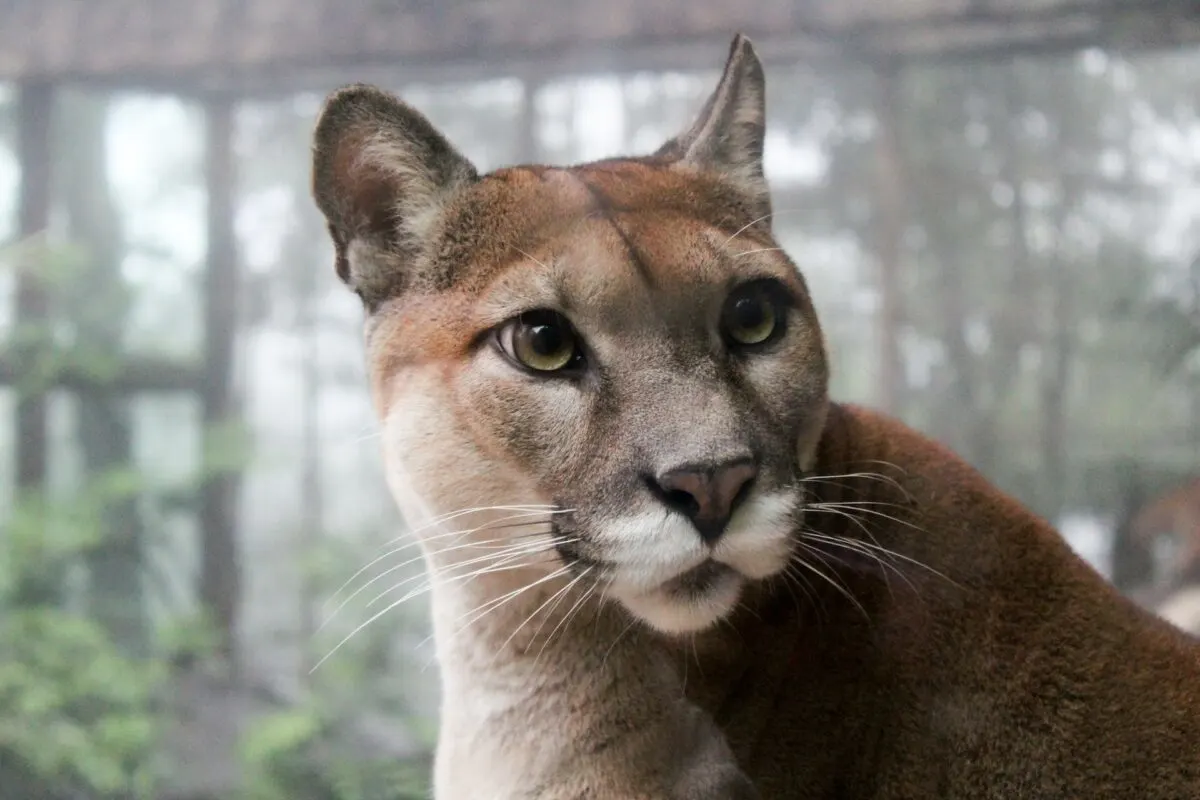In this post we’ll compare a wild predator and a domesticated dog breed – the puma vs. pitbull.
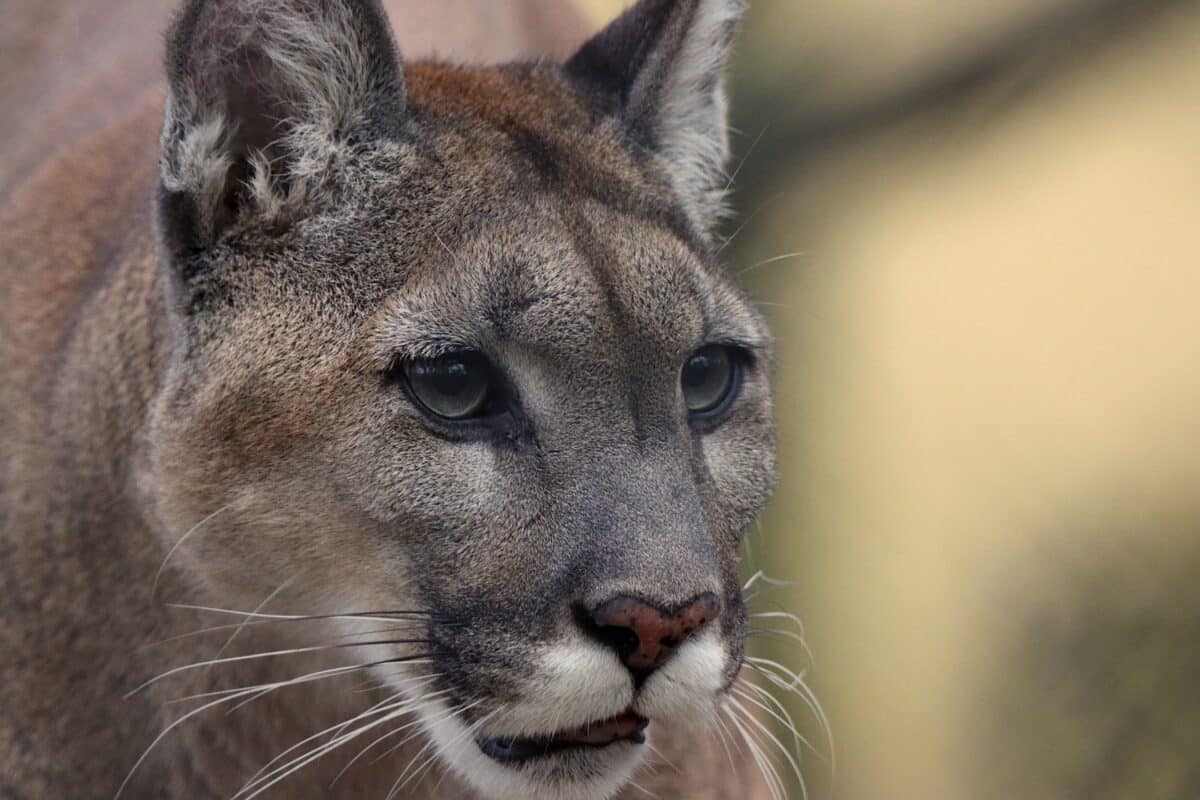
The wild puma and the domestic pitbull are distinct and intriguing creatures. While both belong to the mammal category, each species possesses distinct traits that set them apart.
Understanding the differences in behavior, habitat, and care between these two species is essential for anyone who owns or intends to own either (although there are very few places where it’s actually legal to keep a puma as a pet.)
We will compare and contrast the wild puma and the domestic pitbull, shedding light on their similarities and differences.
Comparison Table
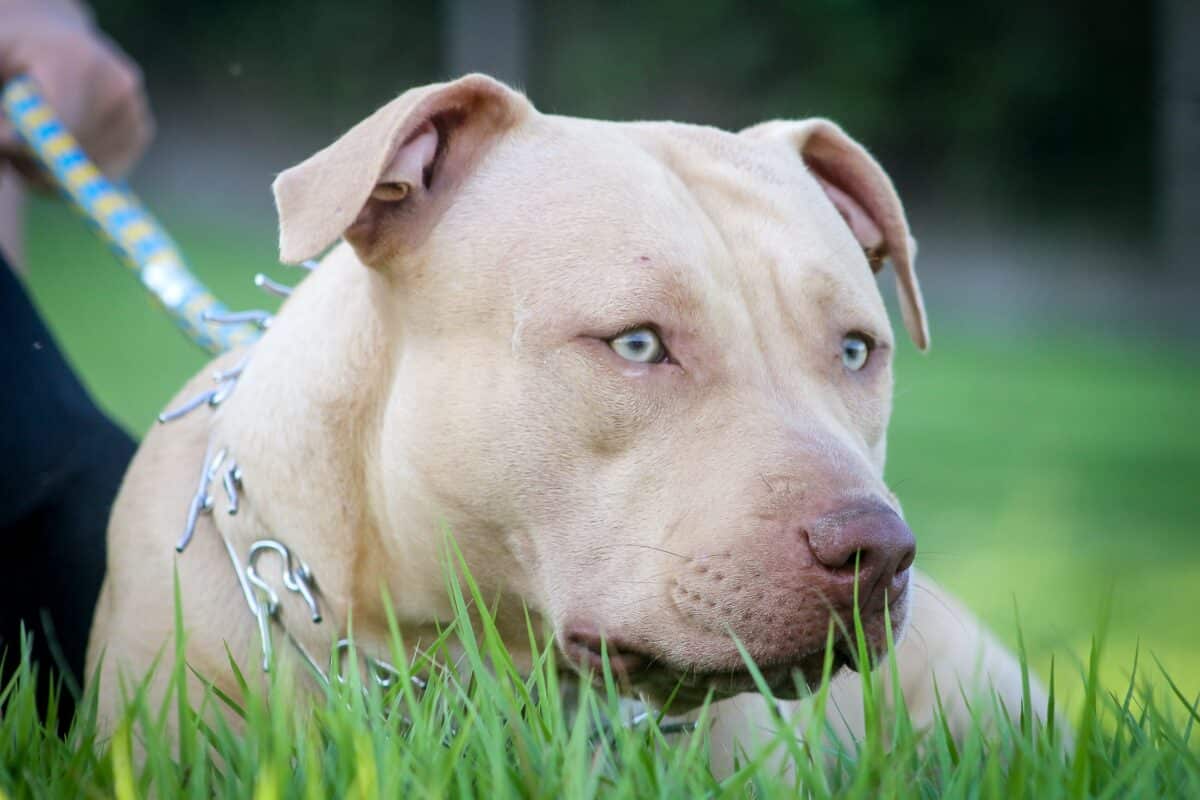
| Criteria | Puma | Pitbull |
| Taxonomy | Wild feline, part of the Felidae family | Domesticated dog breed, part of the Canidae family |
| Habitat | Found in various parts of North and South America, typically in remote wilderness areas | Domesticated and typically kept as a pet in urban or suburban areas |
| Physical Characteristics | Large, muscular cat with tan or brown fur and a long tail; capable of running up to 50 mph | Medium-sized dog with short, sleek fur and a muscular build; capable of running up to 30 mph |
| Diet | Carnivorous, primarily hunting deer, elk, and other large mammals | Omnivorous, with a diet consisting of meat, vegetables, and grains |
| Behavior | Solitary and territorial; typically active at dawn and dusk | Social and typically enjoys being around people and other animals |
| Threat to Humans | Can be dangerous if threatened, but typically avoid human conflict | Can be aggressive if not properly trained or socialized, responsible for a significant number of dog attacks each year |
| Conservation Status | Listed as a species of least concern, with stable populations | Not a wild animal and therefore not listed as an endangered or threatened |
Physical Characteristics: Puma Vs. Pitbull
Puma
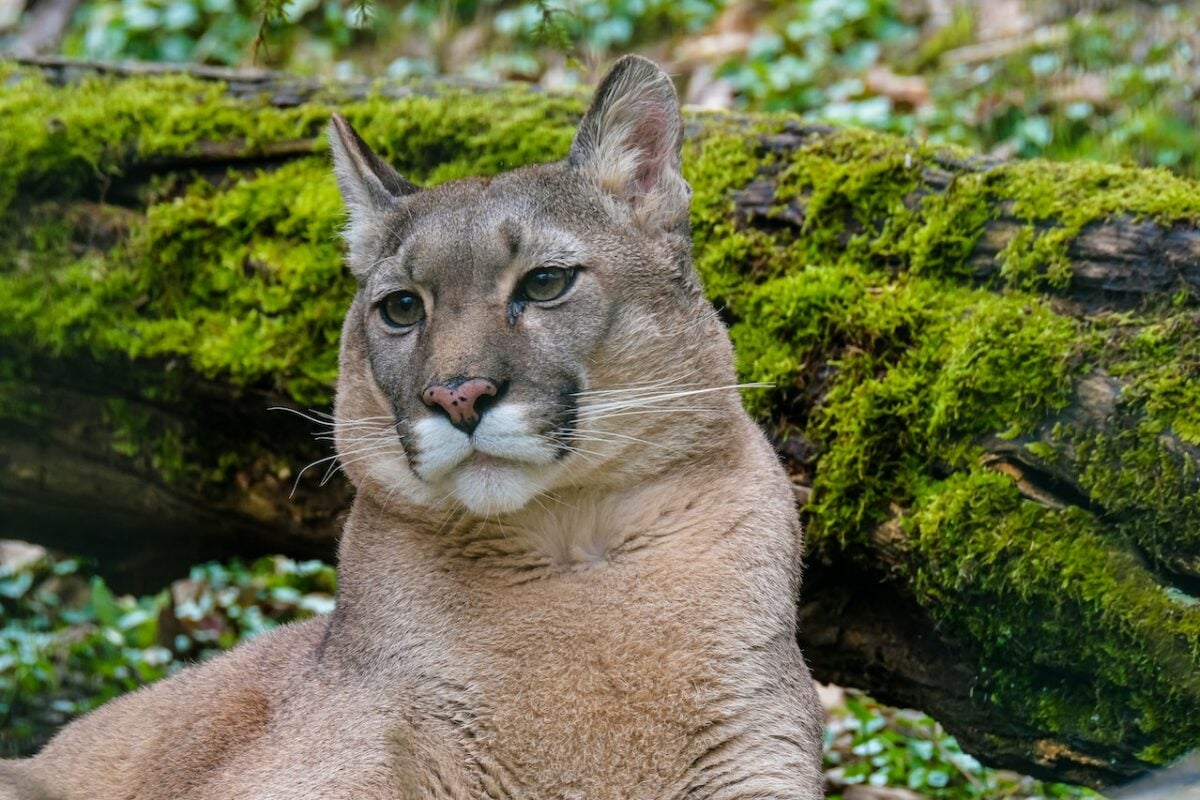
Pumas, also known as cougars, are large cats that are the fourth-largest of the big cats. They have long, powerful bodies, with a small head and round face. Their fur is usually tawny or grayish with black-tipped tails and pale underparts.
These impressive cats have powerful hind legs and long, curved claws that make them excellent climbers. Pumas have amazing physical capabilities – they can run up to 50 mph and jump up to 40 feet in a single bound. They can also be distinguished by their unique facial markings, which can range from black to white.
Being one of the largest members of the cat family, they usually reach weight of 90-180 pounds and range from 3 to 6 feet in length.
Pitbull

The pitbull is a medium-sized, solidly built, short-haired dog, characteristically known for its strength and agility. Although their size varies, they usually measure 18-22 inches in height and 30-60 pounds in weight.
A pitbull’s coat is usually short, smooth, and shiny, and comes in a variety of colors, such as black, white, brown, brindle, red, and blue. It has a broad head, and a muscular and powerful neck and shoulders. They have a deep and wide chest, and its hindquarters are muscular.
This dog breed is especially famous for its strength and agility, which is why it was used for dog fighting (which is now illegal, of course.) However, nowadays its often used as a guard dog. That being said, they are often misunderstood to be inherently aggressive and dangerous – they actually make great cuddle partners, it all has to do with how they are brought up.
Differences In Behavior
The two animals under discussion, the wild puma and the domestic pitbull, display vastly different behavior patterns. While the puma is a natural-born hunter with fierce instincts and predatory behavior, the pitbull is known for its friendly and sociable temperament (it deserves to be mentioned, though, that pitbulls have famously been used for illegal dog fighting.)
The Puma’s Instincts and Predatory Behavior
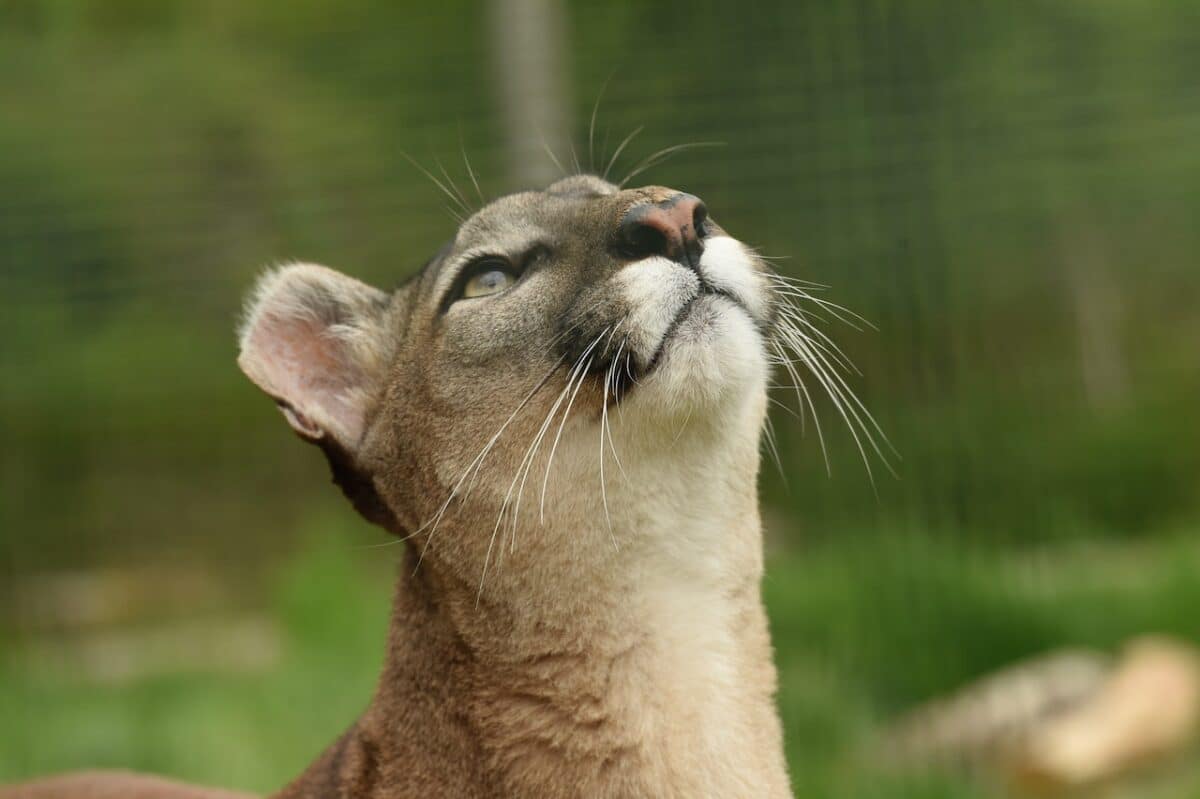
The puma has exceptional instincts and strong predatory behavior, making it a formidable hunter in the wild. It relies heavily on its keen sense of sight and hearing when ambushing its prey, ranging from small rodents to large ungulates like deer and elk.
The puma is known to stalk its prey silently, and when the time is right, it pounces and delivers a swift killing blow to the neck or spine. It is a master at concealing itself. It can easily blend into its surroundings, making it almost impossible for its prey to detect it.
The Pitbull’s Temperament and Social Behavior
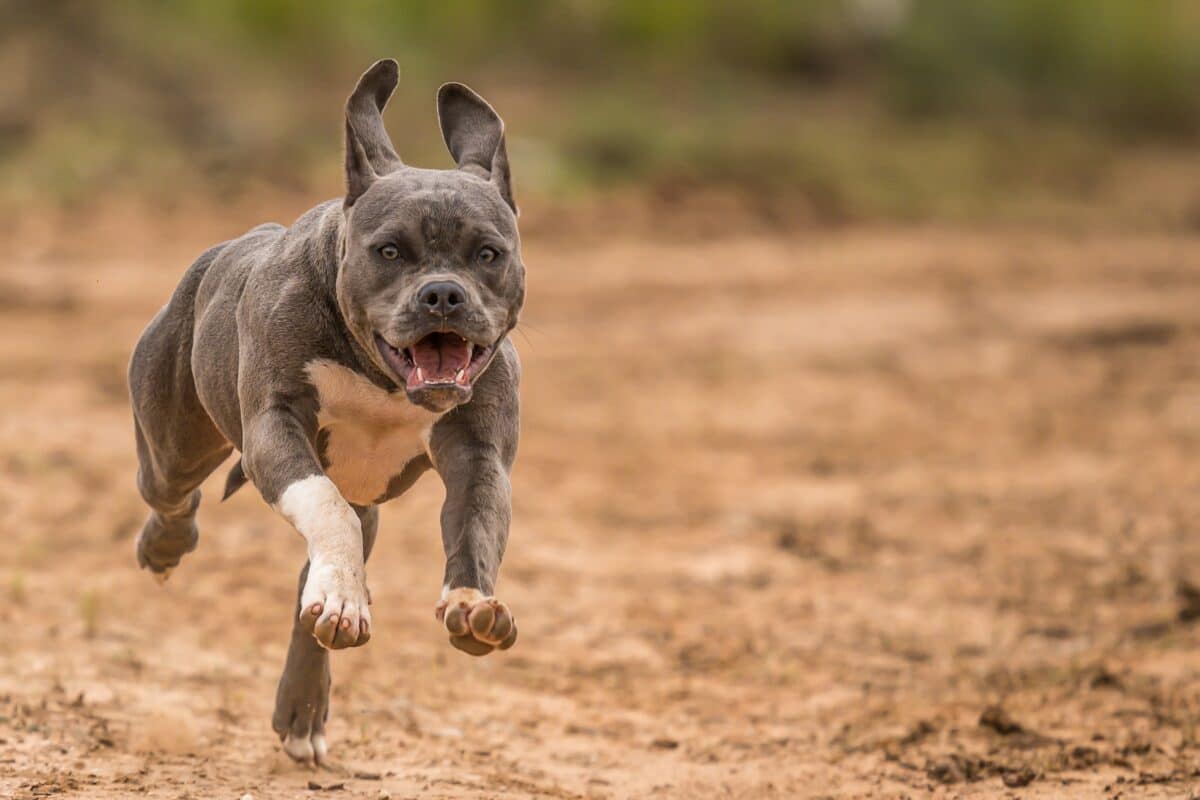
The pitbull is a friendly and sociable dog breed that enjoys the company of people and other animals. It is known for its loyalty and affection towards its owners and has a natural tendency to protect them from harm. Pitbulls have a muscular build and an intimidating appearance, often leading people to assume they are aggressive.
However, the truth is that pitbulls are not inherently aggressive toward humans or other animals. They are known to be gentle and loving pets when raised in a nurturing environment and receive proper socialization and training. As with all dogs, their upbringing is what dictates whether they’re aggressive or not.
Puma Vs. Pitbull: Habitat
As two members of the animal kingdom, the wild puma and the domestic pitbull have unique habitats and lifestyles that make them different. Understanding these habitats helps us appreciate each animal’s various adaptations and behaviors.
Natural Habitat of Wild Pumas
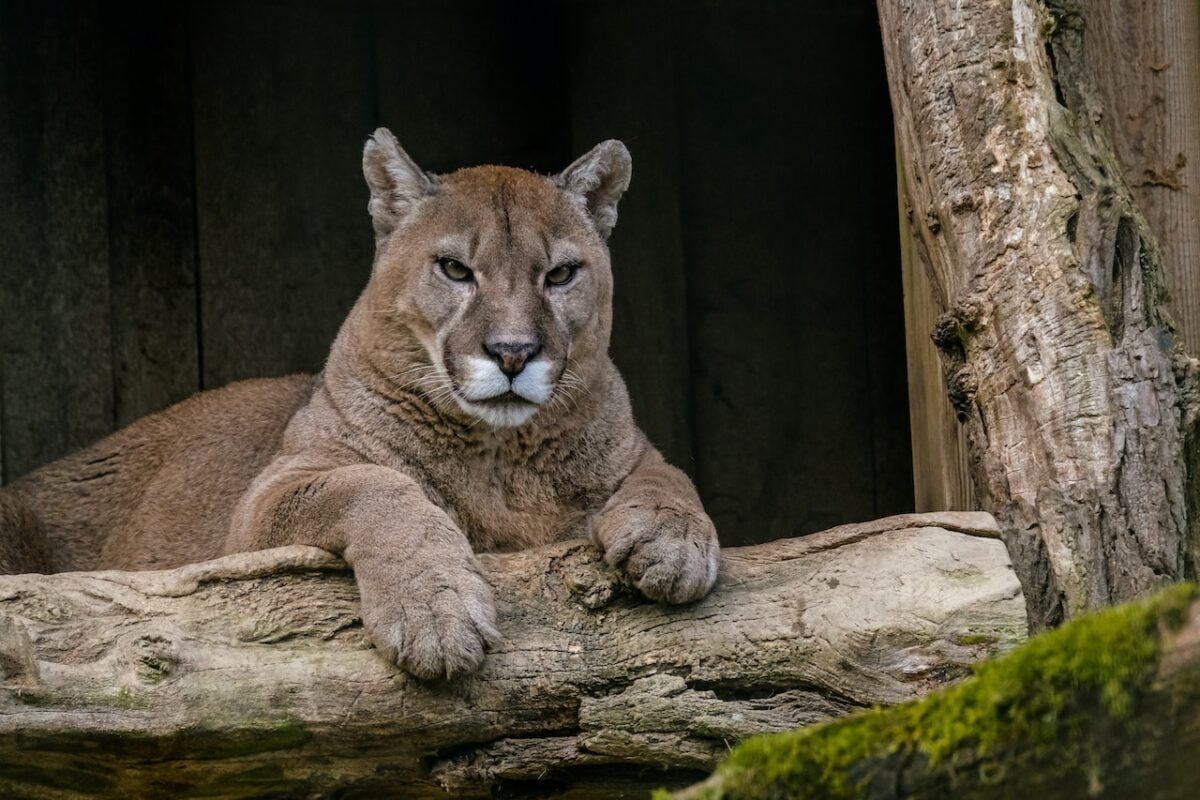
The wild puma, also known as a cougar, is a majestic animal that lives in various habitats, from mountains to forests and deserts. Wild pumas are characterized by their solitary nature and are well adapted to live alone in their territories. They prefer areas with dense vegetation, which allows them to hunt their prey stealthily.
Wild pumas typically occupy habitats around 30-100 square miles in size. These territories are marked by pumas using urine and their paws’ scent. They are extremely territorial animals and fiercely defend their range from intruders.
Find out the Best Places to See Pumas.
Domestic Pitbulls and Their Adaptation To the Urban Setting

Unlike pumas, domestic pit bulls were specifically bred to live alongside human beings. Due to their loyal and protective nature, pitbulls have been used as guard dogs for centuries. They adapt well to urban settings, making them popular pets in many cities worldwide.
Pitbulls are medium to large-sized dogs that require regular exercise and stimulation. However, they are adaptable to living in houses or apartments, provided they get daily walks and outdoor time.
Comparison of Lifestyle and Environment
Wild pumas’ solitary nature and territorial behavior differ from the domestic pitbulls’ social and pack-oriented behavior. Domestic pitbulls thrive in social settings and bond easily with their human and animal companions. In comparison, wild pumas prefer to be alone and only interact with other pumas when they want to mate.
Their environment significantly influences the lifestyle of both animals. Pumas’ natural habitat provides them with diverse food options, such as deer, elk, and bighorn sheep. They are carnivorous animals that require a protein-rich diet. Typically they prey on deer, rabbits, and other small animals in the wild.
On the other hand, pitbulls in urban settings rely on their owners to provide them with a diet of dog food and occasional treats. Their diet should contain a fair amount of protein, carbohydrates, and fat to maintain a healthy weight. As a responsible pet owner, you must provide your pets with a well-balanced and nutritious diet.
Key Points
| The puma relies heavily on its keen sense of sight and hearing about ambushing its prey, ranging from small rodents to large ungulates like deer and elk. |
| Domestic pit bulls were specifically bred to live alongside human beings. Due to their loyal and protective nature, pit bulls have been used as guard dogs for centuries. |
| Wild pumas typically occupy habitats around 30-100 square miles in size. These territories are marked by pumas using urine and their paws’ scent, and they fiercely defend themselves from intruders. |
| The pitbull is a friendly and sociable dog breed that enjoys the company of people and other animals. |
The Final Say: Puma Vs. Pitbull
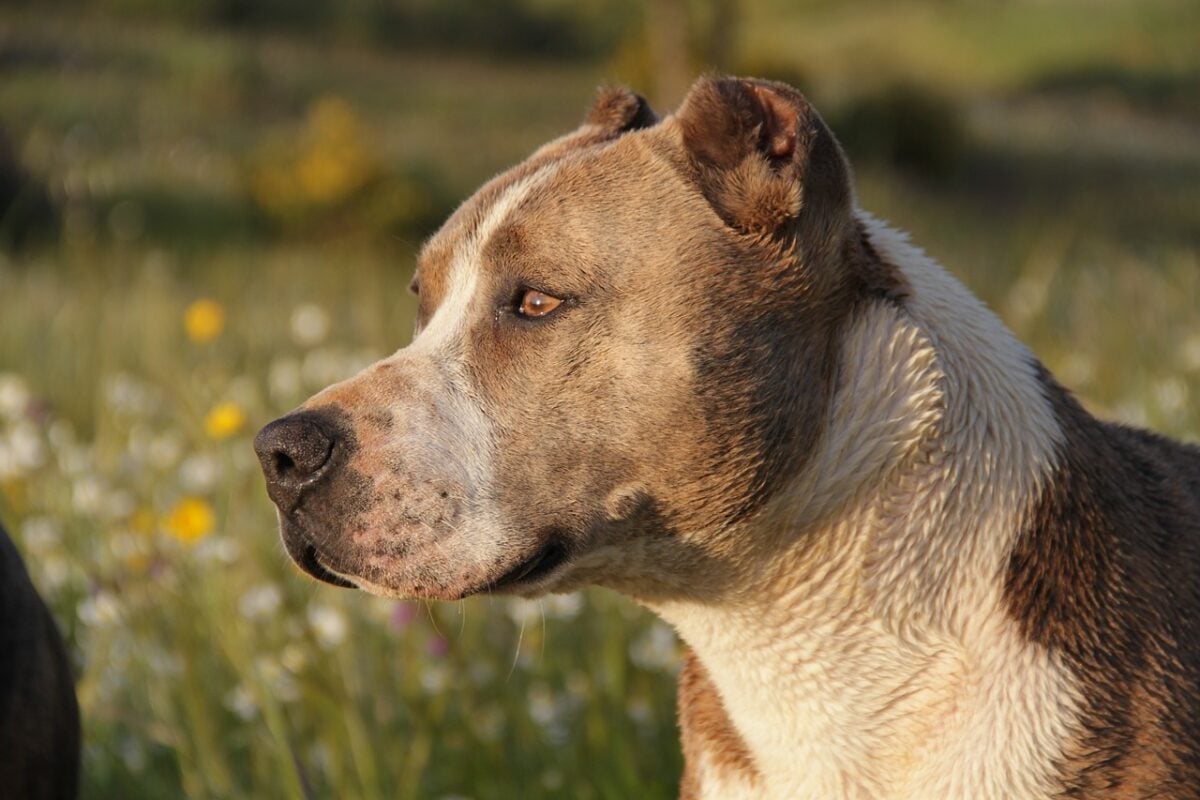
While the wild puma and the domestic pitbull have distinct qualities that make them fascinating and desirable creatures. This comparison especially highlights the differences between wild and domesticated animals. The pitbull is completely dependent on its human parent to provide it with food. Meanwhile, the puma is one of the most talented hunters with it’s insane sense of sight and hearing, as well as their agility.
Although the pitbull does have strong jaws (which is why the breed was used to extensively in dog fighting) they are nowhere as strong as those of a jaguar – after all the jaguar is an apex predator.
Thank you for reading this article about the puma vs. pitbull! If you’re curious about the puma’s relative, head to our post about the 4 Best Places to See Jaguars.
- Magpie Bird Is Reunited with Her Dog Best Friend - April 24, 2024
- Dog Saves Another Dog From Drowning in Fish Pond - April 23, 2024
- Man On Motorbike Rescues Cat From Highway - April 23, 2024

